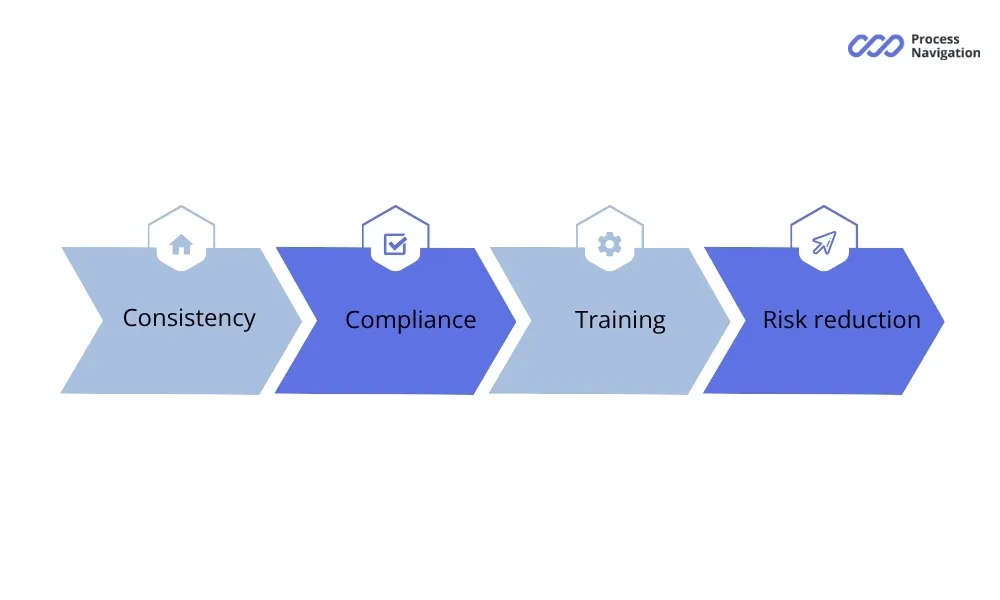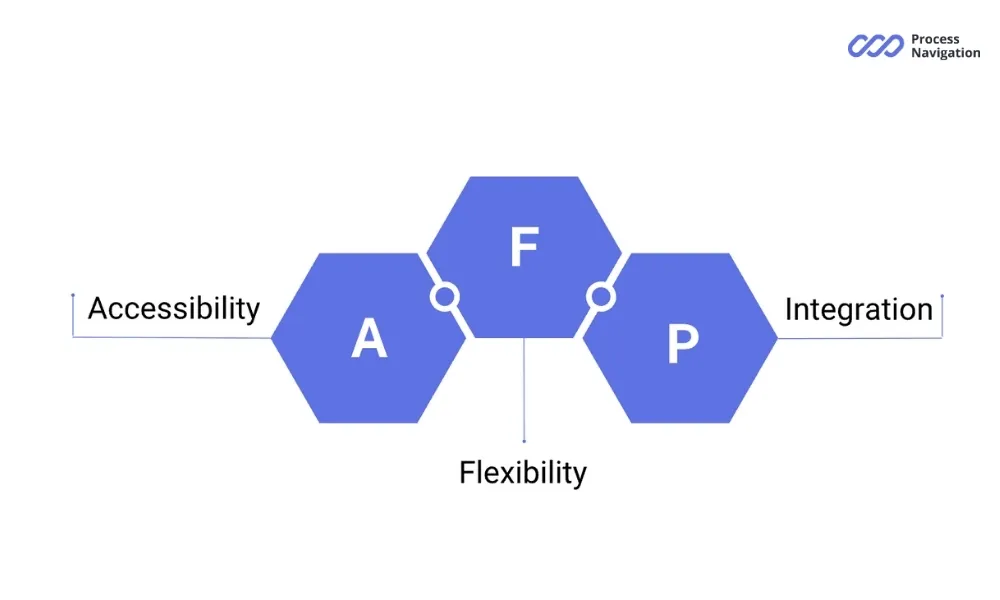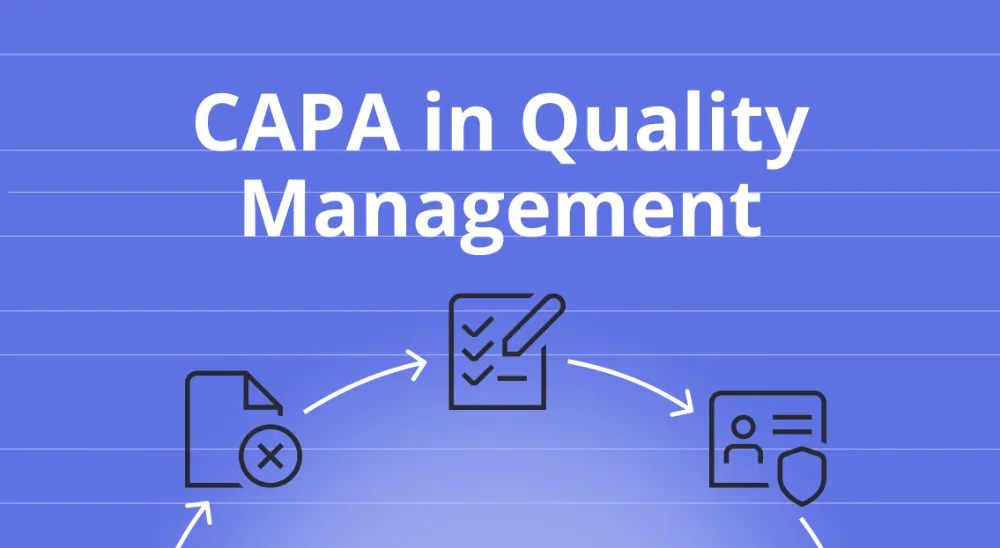Every day, workers perform hundreds of operations in factories and plants. The safety of people, the quality of products, and the company’s profits depend on the quality of their work.
The foundation of effective production is proper documentation. Standard Operating Procedures (SOP), Manufacturing Work Instructions (MWI), and Standard Work Instructions (SWI) help companies operate smoothly. These documents are not just pieces of paper in a folder — they are living tools that make work predictable and safe.
Despite their importance, these terms are often confused or used interchangeably. But each of them has a specific purpose, and knowing how to use them correctly can be the difference between smooth operation and chaos. Manufacturing SOPs serve as the strategic foundation that guides operational excellence across all production activities.
What are Standard Work Instructions?
Standard Work Instructions (SWIs) are detailed step-by-step guides for performing specific work operations. They describe the exact sequence of actions that an employee must perform to achieve a high-quality result.
Standard work instructions are the final layer of detail in standard work, it guides operators on how to do specific tasks within the broader procedures. It’s essential to translate procedures into human centric, practical steps that employees can follow on the shop floor, often through detailed work instructions.
SWIs differ from other documents in that they:
- Contain the most detailed instructions possible.
- Are written in simple language for workers.
- Are posted directly at workplaces.
- Include visual elements (diagrams, photos, charts).
- Are regularly updated.
The Structure of Effective SWIs
| SWI Section | Contents | Why is it important |
| Title | Operation name, version number, date | Quick document identification |
| Purpose | Why is the operation performed? | Understanding the importance of compliance with the standard |
| Scope of application | Where and when it is used | Prevents misuse |
| Safety requirements | Safety precautions | Protecting employee health is priority number one. |
| Materials and tools | Complete list of requirements | Preparation for work without downtime |
| Step-by-step instructions | Detailed sequence of actions | Main part of the document |
| Possible problems | Common mistakes and how to fix them | Quick resolution of emergency situations |
Importance of Standard Work Instructions
SWIs provide significant advantages that benefit workers, supervisors, and the entire organization:
- Consistency: By standardizing tasks, SWIs remove guesswork and reduce variability, to get uniform product quality and operational harmony.
- Safety: By highlighting risks and safety measures SWIs protect workers from hazards and ensure compliance with safety protocols like personal protective equipment (PPE).
- Quality: With clear instructions in place, processes are more controlled, reducing defects and bolstering customer satisfaction.
Ready to implement standardized work instructions in your organization?
Manufacturing SOPs and SWIs can transform your production efficiency and quality outcomes.
Try ProcessNavigation platformSOP in Manufacturing: What Standard Operating Procedure is
Standard Operating Procedure (SOP) in manufacturing are strategic-level documents that define the overall logic of process execution. Manufacturing SOPs establish the foundation for operational excellence by providing a standardized way to approach complex manufacturing operations. If SWIs show “how to turn a nut,” SOP manufacturing explains “why we assemble this unit and how it fits into the overall production process.”
SOP answers fundamental questions about how work is organized. It establishes links between different stages of production, defines employee responsibilities, and creates a basis for management decisions. Without high-quality SOPs, production becomes a set of disparate operations that may be performed technically correctly but do not lead to optimal results.
Manufacturing SOPs include:
- process goals and objectives
- responsible persons
- sequence of main stages
- safety requirements
- performance criteria.
Effective manufacturing SOPs require careful planning and systematic implementation to ensure they deliver the intended operational benefits.
Importance of Manufacturing SOPs

SOPs serve several key functions:
- Consistency: SOPs ensure tasks are done the same way every time, to maintain process quality and reliability. They reduce the risk of human error by removing ambiguity and ensuring the right approach is followed.
- Compliance: In highly regulated industries like pharmaceuticals and aerospace SOP is critical for compliance with laws and safety standards. By formalizing the process SOP ensures every aspect of the business processes is compliant with the relevant regulations, reducing the risk of fines or product recalls.
- Training: SOPs are the basis for training new staff, giving them a clear understanding of the operational procedures from day one, often with visual work instructions. With standardized documentation training is more efficient and structured, which reduces the time it takes for new staff to become competent.
- Risk reduction: Poorly written or implemented SOPs can lead to costly mistakes or accidents. So well designed SOPs are necessary to reduce operational risk. SOP also reduces variability by ensuring repeatability and reliability of processes.
The success of manufacturing SOPs depends heavily on how well they are integrated into daily operations and maintained over time.
Best Practices for SOPs
To be effective, SOPs must be:
- Clear and concise: SOPs should be easy to read and understand, without ambiguity or technical jargon, especially in the manufacturing sector. They should present key information in a simple and effective manner so that employees can follow the documented procedures.
- Actionable: Steps should be simple and actionable. If operators or employees are unsure about any part of the SOPs, they may deviate from the process, leading to inefficiencies or errors.
- Regularly updated: SOPs should be reviewed annually or when there are significant changes in procedures, regulations or technology. Regular reviews and updates ensure that SOPs remain current and reflect best practices.
Well-structured manufacturing SOPs form the backbone of any successful production operation, providing clarity and consistency across all levels.
Types of Manufacturing SOPs: Classification by Area of Application
In real-world manufacturing, SOPs cover a wide range of areas. Understanding this classification helps to structure a company’s document flow correctly:
| Manufacturing SOP Type | Scope of Application | Examples of Processes |
| Production SOPs | Main technological processes | Production planning, material flow management, verification criteria |
| Technical SOPs | Working with equipment and technologies | Technical maintenance, equipment calibration, spare parts management |
| Safety SOPs | Occupational health and safety | Working in hazardous areas, actions in case of accidents |
| Quality SOPs | Quality management system | Internal audits, non-compliance management, customer interaction |
| Logistics SOPs | Supply and shipment management | Receipt of materials, warehouse operations, shipment of finished products |
| HR SOPs | Human resources management | Recruitment, training, performance evaluation |
Organizations implementing comprehensive manufacturing SOPs across these categories typically see significant improvements in operational consistency and regulatory compliance.
Transform your manufacturing documentation with digital solutions designed for operational excellence
Explore ProcessNavigation
Manufacturing Work Instructions: Definition
Manufacturing work instructions (MWIs) are a set of instructions that give workers step by step procedures to follow for specific manufacturing tasks within the production process. These tasks may be assembling components, packaging products, control checks or shipping finished products. The purpose of these instructions for manufacturing processes is to ensure the product meets specifications and to help workers do their job better.
Main Advantages of MWIs
Manufacturing work instructions have many benefits that can improve productivity and product quality. Here are some:
- Time and Efficiency: Well written MWIs means workers can do the job faster and better.
- Knowledge Sharing: Knowledge sharing is part of the work environment. New hires or those unfamiliar with the task can learn quickly by following the work instructions.
- Quality Control: By defining the steps and standards at each stage of MWIs reduces defects and production errors.
- Safety: Work instructions often include safety protocols and guidelines, so workers are aware of the hazards and necessary precautions.
- Process Standardization: Manufacturing work instructions helps to streamline the way tasks are done, which is especially important when working with complex production lines.
The integration of manufacturing SOPs with detailed work instructions creates a comprehensive framework that supports both strategic objectives and operational execution.
SWIs, SOPs and MWIs Differences
While SWIs, SOPs and MWIs are part of manufacturing documentation they have some differences. Let’s present these differences in a table:
| Aspect | Standard Operating Procedures (SOPs) | Standard Work Instructions (SWIs) | Manufacturing Work Instructions (MWIs) | Practical Significance of Differences |
| Main goal | Ensure understanding of the process as a whole | Standardize the execution of operations | Detail production tasks | SOPs provide strategy, SWI/MWI provide tactics |
| Management level | Strategic | Operational | Tactical | Different documents for different levels |
| Planning horizon | Long term (months/years) | Short term (shifts/days) | Operational (hours) | Stability vs flexibility |
| Level of detail | General logic of the process | Detailed steps of the operation | Specific actions | From the general to the specific |
| Frequency of use | Periodic circulation | Daily use | Constant use | Affects the document format |
| Audience | Managers, engineers | Operators, technicians | Workers | Different styles of presentation |
| Impact of changes | Fundamental changes to the process | Local improvements | Spot adjustments | Different procedures for making changes |
| Links to other documents | Refers to a multitude of SWI/MWI | Details parts of SOP | Specifies SWI | Hierarchical document structure |
Interrelationships of Documents in Real Production
Understanding how different types of documents are related to each other is critical to building an effective knowledge management system:
| Use Case | Sequence of Document | Result |
| Launch of a new product | 1. SOP of production planning 2. SOP of quality management 3. SWI of equipment setup 4. MWI of product assembly | Fast and high-quality launch |
| Training a new employee | 1. SOP of workplace organization 2. SWI of operations execution 3. MWI for specific job | Structured learning |
| Investigation of the incident | 1. Incident Investigation SOP 2. Analysis SWI 3. Corrective Action MWI | A systematic approach to problem solving |
| Quality system audit | 1. SOP for conducting audits 2. SWI for checking compliance 3. MWI for recording results | Objective assessment of the system |
The hierarchical relationship between manufacturing SOPs, SWIs, and MWIs ensures that strategic objectives cascade effectively to operational execution.
System of Control and Continuous Improvement
Many managers believe that creating standard instructions is the final stretch of a standardization project. They wrote the SOP, developed the SWI, trained the staff, and they can relax, enjoying the results. This is a profound misconception that leads to the failure of most standardization initiatives.
In reality, creating SOPs is only the first 20% of the work. The remaining 80% is spent on ensuring compliance with standards, their continuous improvement and adaptation to changing conditions. Without a system of control and improvement, the highest quality standards turn into dead papers that lie in folders and do not affect real processes. Successful manufacturing SOPs require ongoing maintenance and regular updates to remain effective.
PDCA Cycle in Standards Management
The PDCA (Plan-Do-Check-Act) cycle is the foundation for continuously improving work standards. Understanding how to apply this cycle to document management is critical to long-term success:
| PDCA Phase | Application to Standards | Actions | Expected Results |
| Plan | Analysis of the effectiveness of current standards | Collecting data on problems, planning improvements | Standards Update Plan |
| Do | Implementation of improved standards | Pilot testing, staff training | Updated documents |
| Check | Monitoring the results of changes | KPI measurement, compliance audits | Evaluating the effectiveness of changes |
| Act | Standardization of successful solutions | Replication of best practices | New level of standards |
Deviation Management — Work with Deviations
The deviation management system is an indicator of the quality of standards and the effectiveness of their implementation. A properly organized deviation management system allows you to turn problems into opportunities for improvement:
| Type of Deviation | Possible Causes | Corrective Actions |
| Violation of the sequence of operations | The inconvenience of the standard sequence | Review of technology, staff training |
| Using non-standard tools | Unavailability of standard tools | Providing the necessary tools |
| Skipping control operations | Lack of time, unclear requirements | Revision of time standards, clarification of instructions |
| Failure to comply with safety guidelines | Misunderstanding of risks | Additional training |
Kaizen Events — Team Work on Standards
Kaizen events are structured improvement events that involve all stakeholders in improving standards:
| Stage | Participants | Duration | Results |
| Preparation | Manager, engineers | 1-2 weeks | Defining goals, preparing data |
| Analysis of the current state | Operators, engineers | 1 day | Identifying problems and their causes |
| Idea generation | The whole team | half a day | List of suggestions for improvement |
| Development of solutions | Engineers | 1-2 days | New standards and instructions |
| Implementation | The whole team | 1-2 days | Testing new approaches |
| Standardization | Process Management | 1 week | Updated documentation |
Compliance Traceability — Compliance Tracking
A compliance tracking system allows you to monitor how effectively standards are implemented and observed at all levels of the organization:
| Level of Control | Objects of Monitoring | Frequency of Checks |
| Workplace | SWI compliance by operators | Daily |
| Production area | SOP implementation by the department | Weekly |
| Factory | Functioning of the standards system | Monthly |
| Corporation | Uniformity of standards between factories | Quarterly |
Audit Readiness
Constant readiness for audits is an indicator of the maturity of the standards system. Organizations with a well-established standardization system are not afraid of audits, but perceive them as an opportunity for improvement.
Link to ISO 9001 Requirements
The system of standard instructions is the basis for meeting the requirements of the international standard ISO 9001. Understanding this connection helps to structure the documentation in such a way that it simultaneously serves practical purposes and ensures compliance with the requirements of the standard:
| ISO 9001 Requirement | How it’s Ensured through Standards |
| Quality Management System | SOPs define processes and their interactions |
| Organizational knowledge | Knowledge capture in standards |
| Competence | Operator training matrix |
| Operational planning | SWI/MWI for operational processes |
| Production management | Detailed manufacturing instructions |
| Nonconformities and corrective actions | Deviation management system |
The Future of Work Instructions: Digital Work Instructions

As manufacturing becomes more complex and dynamic, traditional work instructions are being replaced by work instruction development software and other digital solutions. Digital SOPs have several advantages over paper based SOPs systems:
- Accessibility: Operators can access digital SOPs anywhere in the workshop, reduces downtime and increases efficiency.
- Flexibility: Digital SOPs can be updated in real time; operators have access to the latest information all the time. This flexibility allows you to implement process improvements without delay.
- Integration: Modern production is impossible without the integration of all information systems.
| System | Integration Type | Practical Advantages |
| ERP | Automatic submission of current specifications to instructions | Eliminate errors due to outdated data |
| MES | Transfer of information on the execution of operations | Automatic time tracking and control of compliance with technology |
| Quality Management System | Integration of checkpoints | Automatic recording of control results |
| Maintenance system | Connection with maintenance procedures and repair plans | Timely execution of scheduled maintenance work |
Standard work instructions are the foundation of effective production. They ensure quality, safety, and process stability. Proper implementation of SWI, SOP, and MWI requires a systematic approach, but yields significant results.
Modern digital SOPs open up new opportunities for improving productivity. The main thing to remember is that standardization does not limit, but rather frees up creative potential for solving more important assignment.
Organizations that successfully implement management SOPs across various industries find that SOPs provide a framework for regulatory compliance and help maintain a strong safety culture. Frontline workers benefit from clear guidance, while safety officers and other team members can ensure hires follow established compliance requirements.
When companies digitize SOPs, they create easy access to a vast collection of standardized documents that guide workers through routine job and complex manufacturing operations. Each SOP document serves as an SOP outlines for specific operations, helping to prevent accidents and reduce safety incidents. The implementation of existing SOPs must align with industry regulations and regulatory requirements, ensuring that all team members can follow the established process steps.
Modern organizations recognize that SOPs are key to success, particularly when dealing with machine setup, complex manufacturing processes, and new procedures. The ability to effectively manage SOPs through digital platforms provides organizations with the tools needed to maintain high standards while adapting to changing regulatory standards and market demands.
FAQ
Start with the most critical processes — those that affect safety, quality, or costs. Use a gemba walk checklist to study how work is actually performed. Involve experienced operators in creating the procedures.
SWI should be reviewed every time a process, equipment, or requirements change. Scheduled reviews are recommended at least once a year. It is important to maintain version control workflow. When updating existing SOPs, consider the impact on operations and regulatory compliance.
For a small site, it takes 2-3 months. For large-scale production, it takes 6-12 months. Much depends on the complexity of the processes and the readiness of the staff for change.
Use KPIs before and after implementation: operation execution time, number of errors, productivity, safety. Conduct regular audit readiness to assess compliance with standards.
Conduct a root cause analysis. Possible reasons: standards are inconvenient to use, staff is not sufficiently trained, there is no control over compliance, standards do not correspond to real processes. Use the PDCA cycle for systematic improvement. Collect feedback from operators and adjust documents. The comprehensive table of contents above demonstrates how organizations can achieve high quality products through systematic implementation of standardized documentation across their manufacturing operations.
Take your manufacturing operations to the next level with integrated digital documentation and process management
Start it free with ProcessNavigation
-
 CAPA: Corrective and Preventive Action in Quality Management
CAPA: Corrective and Preventive Action in Quality ManagementThere are many problem-solving methods in the world of quality management, but one has become…
Technology • October 27, 2025
-
 How Effective Digital Work Instructions Change Manufacturing
How Effective Digital Work Instructions Change ManufacturingModern manufacturing is undergoing radical changes associated with the transition from traditional paper-based processes to…
Technology • October 27, 2025
-
 Manufacturing Success with SOPs and Standard Work Instructions
Manufacturing Success with SOPs and Standard Work InstructionsEvery day, workers perform hundreds of operations in factories and plants. The safety of people,…
Technology • October 27, 2025